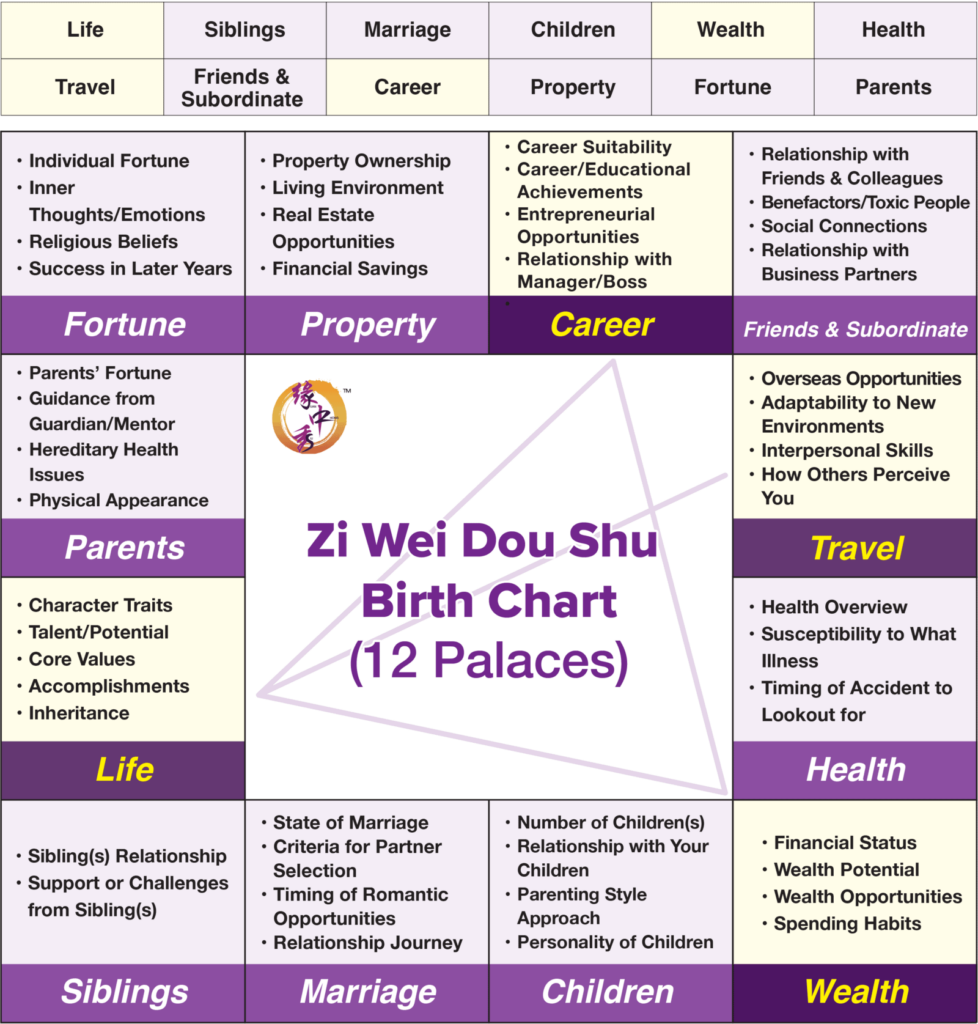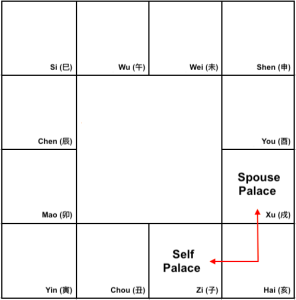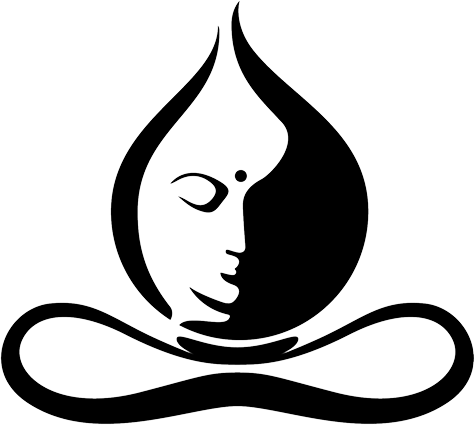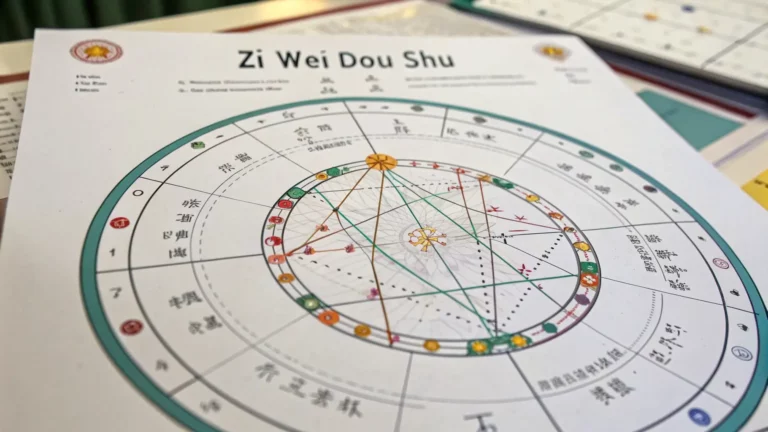Zi Wei Dou Shu, a powerful Chinese astrological system, offers profound insights into your life path. Understanding your chart is the first step to unlocking these insights. This system considers various factors, including your birth date, time, and location. Each element in your chart holds a unique meaning. Your chart reveals patterns and trends in your life. By understanding these patterns, you can anticipate potential challenges and opportunities. This knowledge empowers you to make informed decisions and navigate life’s journey with greater awareness. The chart also provides insights into your relationships and potential career paths. Interpreting your chart involves understanding the placement of stars and their interactions. Each star represents a different aspect of your life, such as career, relationships, and finances. By analyzing these interactions, you can gain a deeper understanding of your strengths and weaknesses. This knowledge can help you make informed decisions and navigate life’s challenges with greater confidence.
The Palace System vs. The Star System
Zi Wei Dou Shu (Imperial Astrology) developed over centuries, with significant refinement during the early Ming Dynasty (14th-15th century A.D.). During this period, two primary analytical systems emerged: the Palace System and the Star System. A clear understanding of these systems is essential for accurate interpretation of a Zi Wei Dou Shu chart.
The Palace System focuses on the broader influences of time and space, representing external life conditions and different areas of one’s life.
In contrast, the Star System delves into an individual’s personal traits, values, responses, and behaviors in relation to these external forces.
Today, modern Zi Wei Dou Shu blends both systems. However, this integration can sometimes lead to confusion, especially when interpreting ancient texts. Understanding the distinction between these two systems can help resolve discrepancies and provide clearer insights.

A palace is influenced by nearby palaces, the one directly opposite, and related harmony palaces. If there are no major stars in the palace being analyzed, we look at the major stars in the opposite palace, treating them as if they are in the palace we are studying. This is because the opposite palace reflects the palace in focus. These two palaces have the strongest connection to each other. The palaces revolve in a chart. Each person has a 10-year luck chart and an annual luck chart. The first 10-year luck chart is the same as the original natal chart. In the second 10-year luck chart, the Life Palace is placed either in the Parents Palace or the Siblings Palace, depending on whether the person is male or female. The other palaces shift one position along with the Life Palace. This movement in the chart affects our luck.
Meaning of the palace itself
Each palace has its specific meaning and reflects different aspects of life. For example, the Life Palace represents a person’s overall fate and personality traits; the Wealth Palace reflects financial fortune and wealth status; the Spouse Palace is related to marriage and emotions.
Relationships between palaces: There are certain interrelationships between the twelve palaces. For example, the opposite palace (the opposite of the Life Palace is the Migration Palace). The star combinations in the opposite palace will have an impact on the original palace, usually indicating the influence of the external environment on oneself or one’s reaction to the outside world. In addition, there are also trine palaces (such as the trine palace composed of the Life Palace, Wealth Palace, and Career Palace). The star combinations in the trine palace can comprehensively judge a person’s development trends in career, wealth and other aspects.
Determine the twelve palaces
Based on the birth time, first determine the position of the Life Palace. Then, in counterclockwise order, arrange the Brother Palace, Spouse Palace, Children Palace, Wealth Palace, Health Palace, Migration Palace, Friendship Palace (Servant Palace), Career Palace, Field Palace, Blessing Palace, and Parent Palace. These twelve palaces represent twelve main aspects and fields of life.
Place the stars
According to the heavenly stems and earthly branches information of the year, month, day, and hour of birth, place numerous stars (such as the fourteen main stars like Ziwei, Tianji, Taiyang, as well as auxiliary stars and assisting stars like Zuofu, Youbi, Wenchang, Wenqu, and malefic stars like Huoxing, Lingxing, and transformed stars like Huayin, Huayang, Huayin, Huayang) in the corresponding palaces.
Interpretation of star characteristics:
Main stars: The fourteen main stars each have their unique natures and symbolic meanings. For example, Ziwei star is regarded as the imperial star, representing nobility and authority, with leadership abilities and strong self-esteem traits. Tanlang star governs desires and peach blossoms, and has characteristics such as being good at communication and having a strong curiosity.
Auxiliary stars: Zuofu and Youbi can enhance the power of the main stars. Tiankui and Tianyue represent the help of noble people.
Malefic stars: Malefic stars like Huoxing and Lingxing will bring impacts and obstacles, increasing the twists and turns and variability of life. Qiangyang and Tuoluo represent conflicts and disputes.
Transformed stars: Huayin symbolizes wealth and good luck; Huayang represents power and control; Huayin represents reputation and studies; Huayang indicates obstacles and troubles.
Analysis of star combinations
Different stars combined in the same palace will produce different effects and influences. For example, when Ziwei and Tianfu are in the same palace, it will enhance the noble air and wealth fortune of the life master. While when Lianzhen and Tanlang are in the same palace, the peach blossom nature is even stronger, but it may also bring emotional troubles and twists.
Combine the four transformed stars
The four transformed stars (Huayin, Huayang, Huayin, Huayang) are very important elements in Zi Wei Dou Shu. They will appear in different palaces as time and heavenly stems change, having an important impact on the pattern and fortune of the life chart. For example, when Huayin is in the Wealth Palace, it may indicate that financial fortune is good during a certain period and there are opportunities to make money. When Huayang is in the Spouse Palace, it may mean that there will be some troubles or obstacles in marriage and emotions.
Comprehensive judgment
Analysis of major trends and yearly fortunes
In addition to the natal chart, changes in major trends (taking ten years as a stage) and yearly fortunes (each year) are also used to further analyze the fluctuations in fortune. The life chart of the major trend is based on the natal chart and changes and deduces according to certain rules, reflecting the development trends and focuses of life at different stages. The yearly fortune life chart is for a specific year. By analyzing the changes in the star combinations and the four transformed stars of the yearly fortune, it judges the good and bad fortune, career development, emotional status and other aspects of that year.
Comprehensive consideration: The analysis of the life chart needs to comprehensively consider multiple factors such as stars, palaces, four transformed stars, major trends, and yearly fortunes. A judgment cannot be made based on just one factor. At the same time, it also needs to be flexibly interpreted in combination with the actual life background, personal experiences, and personality characteristics of the life master. Because Zi Wei Dou Shu is only a prediction tool and cannot completely determine a person’s fate, but rather provides a reference and inspiration.
Example of the Palace System in Action
In Zi Wei Dou Shu, Impeded Angle Affliction (Ge Jiao Sha 隔角煞) refers to a specific spatial configuration within a chart that suggests relational instability or a sense of distance between individuals. There can be applied to all the palaces separated by a corner.
For example, if one’s Self Palace (命宮) is positioned at the Earthly Branch “Zi” (子), the Spouse Palace (夫妻宮) would be at “Xu” (戌). In this configuration, the Life Palace and Spouse Palace are separated by a corner. It’s akin to two people sitting at opposite ends of the same table; even with a good relationship, there’s a sense of distance.

Example of the Star System in Action
Zi Wei Dou Shu utilizes fourteen major stars and four ominous stars. When a major star is found in the same palace as an ominous star, the negative influence of the latter can overshadow the positive qualities of the major star. For example:
-
If the Military Star (Wu Qu 武曲) shares a palace with the Fire Star (Huo Xing 火星) or Destruction Star (Qing Yang 擎羊), it suggests financial instability, no matter which palace they are located in. If this combination appears in the Spouse Palace, it can indicate financial losses linked to romantic relationships. In the Friends Palace, it could point to financial challenges arising from subordinates or friends.
-
Similarly, if the Vanguard Star (Pojun 破軍), which represents children, is found in the same palace as the Destruction Star, it can suggest a strained relationship with children. In traditional practice, such a combination in a woman’s chart may be interpreted as a history of miscarriage or abortion, or at the very least, difficulties in conception.
The Star System focuses on personal characteristics rather than the placement of the stars in specific palaces. This makes it an invaluable tool for understanding an individual’s inherent traits, tendencies, and behaviors independent of external influences.
The Natal Chart: A Roadmap to Self-Understanding
Zi Wei Dou Shu’s Natal Chart was originally designed to serve as a tool for self-awareness, rather than just fortune-telling. It helps individuals identify their strengths, challenges, and recurring patterns in life.
-
Self Palace (命宮): Represents your personality and core values, which influence how you approach all other aspects of life.
-
Action Palace (Shen Gong 身宮): Reflects your aspirations and how you express your values. For instance, someone with a cautious nature (Self Palace) may still seek a passionate or adventurous lifestyle (Action Palace).
By analyzing the relationships among the various palaces, Zi Wei Dou Shu offers a deeper understanding of the complexities of your personality. This intricate interplay reveals how we adapt our attitudes and behaviors to meet different needs, providing profound insights into our inner desires.
Key Indicators In the Natal Chart
The Obstruction Star (Tuo Luo 陀羅)
Rooted in Buddhist philosophy, the Obstruction Star represents persistent challenges and entanglements throughout one’s life. The palace that this star occupies reveals areas where struggles tend to persist. For example:
-
Spouse Palace: Indicates that relationships may consistently cause emotional or relational entanglements.
-
Self Palace: Suggests traits like overthinking or stubbornness, leading to self-inflicted stress and internal conflict.
Hindered Transformation (Huà Jì 化忌)
As one of the Four Transformations, Hindered Transformation (化忌) reflects internal voids and unmet expectations. The term “忌” is derived from “己心,” meaning one’s inner self or heart, signifying areas where a person feels a lack or deficiency. This emptiness often drives them to seek fulfillment in various ways.
-
In the Spouse Palace: This position suggests someone may have high, often unrealistic, expectations in relationships. The desire to fill this internal void can lead to impulsive decisions, such as entering unsuitable relationships out of impatience or misjudgment. The nature of these expectations varies depending on which star is hindered.
-
In the Career Palace: Points to an internal emptiness related to professional life, which may result in overwork or a constant desire to switch careers in search of fulfillment.
The Hindered Transformation of a star reveals areas in life where an individual may feel unfulfilled, influencing them to make decisions that are not always in their best interest. Recognizing these patterns allows one to make more conscious and balanced choices.
The Decade Chart: Life’s Evolving Lessons
As we journey through life, our values, priorities, and goals evolve. The Decade Chart breaks life into ten-year phases, with each phase representing a different set of influences and personal growth.
Understanding the current phase in one’s Decade Chart offers insights into potential opportunities and challenges, guiding individuals to make informed decisions and be better prepared for what lies ahead.
Annual and Yearly Influences: Mapping Short-Term Trends
While the Natal Chart offers a detailed blueprint of one’s life, the Decade Chart maps the progression of personal growth and development over ten-year intervals. To assess short-term influences, practitioners analyze the following components:
-
Yearly Chart (小限): Based on one’s age, this chart reflects the individual’s mindset and personal decisions for the year.
-
Annual Chart (流年): Tied to the Chinese zodiac sign of the year, this chart highlights broader societal or environmental influences that could affect an individual. Although these external conditions apply to everyone, their impact will differ depending on how they interact with one’s natal chart.
-
Overlapping Palaces (疊宮): This examines the interplay between the Yearly, Annual, Decade, and Natal charts, offering a deeper understanding of yearly influences and patterns.
For example, a challenging year might stem from a conflict between an individual’s internal state (as shown in the Yearly Chart) and the external circumstances (represented in the Annual Chart). By identifying and understanding these patterns, one can navigate challenges more effectively, making informed decisions rather than feeling powerless in the face of external pressures.
The Four Transformations (Si Hua 四化): The Dynamic Forces of Life
As previously mentioned, the concept of Hindered Transformation is part of the Four Transformations, a fundamental technique in Zi Wei Dou Shu that holds as much importance as the concept of overlapping palaces.
The Four Transformations describe how major stars evolve under external influences:
- Transformation of Enrichment (化祿): Represents gain and fulfillment.
- Transformation of Empowerment (化權): Reflects control, influence, and authority.
- Transformation of Fame (化科): Signifies recognition and visibility.
- Transformation of Hindrance (化忌): Indicates deficiency and struggle.
Practical Application of the Four Transformations
- Enrichment Transformation in the Wealth Palace indicates income growth and financial opportunities.
- Empowerment Transformation in the Career Palace suggests leadership potential and professional authority.
- Fame Transformation in the Self Palace points to increased recognition and an enhanced reputation.
- Hindered Transformation in the Wealth Palace suggests financial challenges or dissatisfaction, potentially leading to difficulties in managing resources.
The Principle of “Enrichment Follows Hindrance” (祿隨忌走)
In Zi Wei Dou Shu, there is a key principle: “Enrichment follows Hindrance.” This means that the palace undergoing the Transformation of Enrichment compensates for the deficiencies or struggles present in the palace undergoing the Transformation of Hindrance.
For example, in a natal chart, if the Wealth Palace (which represents financial matters) undergoes the Transformation of Enrichment, it indicates an increase in financial resources. However, if the Spouse Palace (which represents romantic relationships) undergoes the Transformation of Hindrance, it suggests challenges in relationships. This combination implies that the person may use their increased financial resources to invest in or support their relationships.
Practical Application of the Four Transformations in Overlapping Palaces
Let’s consider the Transformation of Enrichment in the Wealth Palace. This indicates a person’s ability to generate income. However, if the Transformation of Hindrance appears in the Friends Palace in the Decade Chart, it suggests that during that period, the individual may face challenges in friendships. This could lead to spending a significant portion of their earnings on maintaining or navigating those friendships.
The three-dimensional applications of Zi Wei Dou Shu begin to emerge when examining the Four Transformations across different palaces and periodic charts. These insights reveal the depth and complexity of the system, helping practitioners pinpoint areas in need of attention, strategic action, and adaptation. By analyzing these transformations, individuals can better navigate challenges and capitalize on opportunities throughout different phases of their lives.




